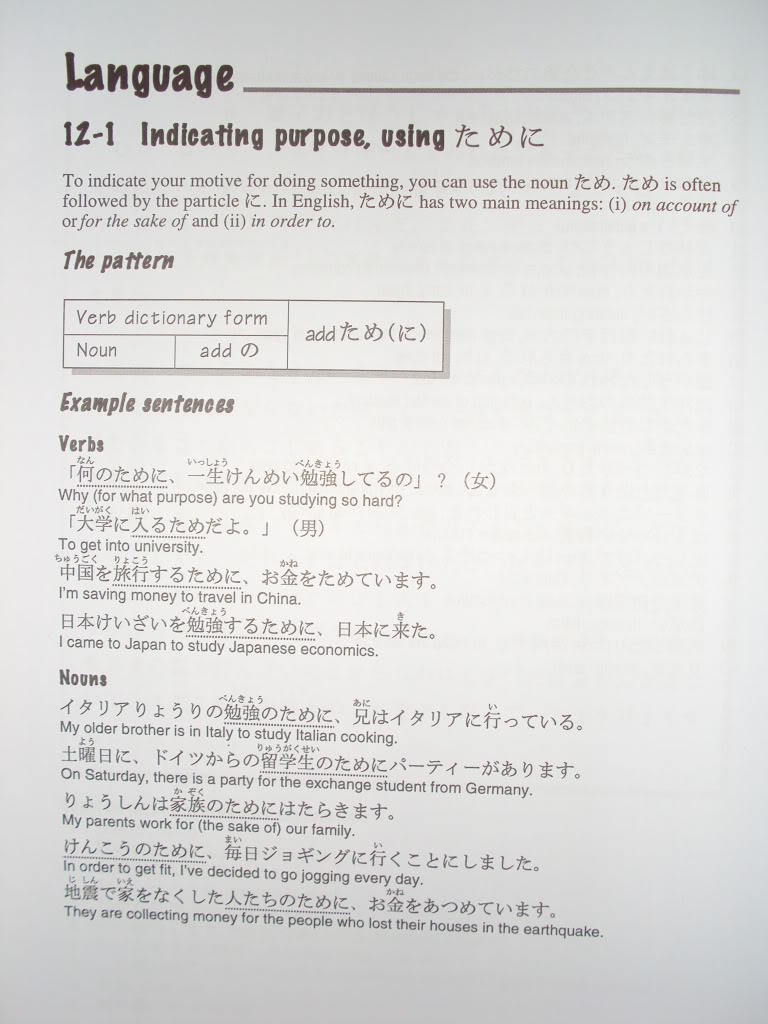yurisaku wrote:
uhm, in the first sentence, it was 行きます。。 then on the second, it became 行くって。。
hmm.. i wanna ask if the 行くって can still be converted to polite form?
Yuri-chan, the polite form of って is と言う、so it would become (in writing)と言ってました・と言いました・と言った。(was saying (polite), said (polite), said (casual))
LieAnn wrote:
1.) How to/when to use な-adjectives?
2.) What is the meaning of な at the end of a sentence? Is it a particle too? I always see that at mangas. Example: よし、みんあうまくたくれたな。
3.) What is the difference between 開きます(あきます - Vi) / 開けます(あけます - Vt) and 開きます(ひらきます - Vi/Vt). I'm quite confused 'cause they both mean the same word (Open).
LieAnn, な adjectives should be used when you want to or feel the need to use them - there's no real limit on when you can or when you can't use them. In terms of how TO use them:
- Spoiler:
-When you are using them as noun modifiers, simply place them in their な form before the noun: 静かな街(しずかなまち) - a quiet town, 微妙な違い(びみょうなちがい) - a subtle difference.
-When you are using them as adjectival predicates (when they are the predicate in your sentence and behave like a verb), you simply place them before the copular "to be" (だ・です): この街は静かだ・です。 - This town is quiet.
-When you use them as adverbs (the adverbial form), なbecomes に: 街が静かになった - The town became quiet.
-When using them along with other adjectives (also known as the adjective's ーて form), you change な to で: 静かで小さい街 - a small and quiet town
-When you use them with auxiliaries such as らしい、かもしれない、そうな、そうだ、みたいな (auxiliary adjectives)、 and すぎる (auxiliary verbs), you drop な and use the adjectives as if they were nouns: 静かすぎる (too quiet), 静かかもしれない (it might be quiet), 静からしい (it's apparently quiet), etc.
-When you want to change them into nouns, simply add さ like you do to the stems of い adjectives: 静かさ (quietness)
Hope this helps.

Paladinoras wrote:
2. And as far as I know, na isn't a particle, it's more of one of those end sounds Japanese people use to express their emotions. Kind of like how some people would use nee at the end of their sentence to ask a question although the sentence isn't really a question in the first place. It's really hard to explain, maybe tenjou can explain better than me. >.<
Pally, your explanation for #2 is partially correct. な used at the end of a sentence is most often a substitute for ね, mostly used by male speakers, to indicate emotion. There are at least 5 definitive ways to use な as a sentence-ending particle (it actually is considered a particle, btw):
- Spoiler:
1. A particle indicating intense emotion or desire - 日本に行きたいなぁ(なあ)!(I really wanna go to Japan!), きれいな街だなあ(なぁ)!(What a beautiful town!) As you can see, な in this form is often extended/stressed to include an extra A sound. This particle was once considered only appropriate for men, but nowadays, it is acceptable for women to use it as well (you'll notice Timo, RINA and MAMI all use it a lot)
2. A particle asking for another's agreement/confirmation - その街はにぎやかだよな。(That town is pretty busy, huh?/I'm sure that town is busy) ・この街はにぎやかだな。(This town sure is busy, isn't it?) Again, this particle was once used exclusively by men, but nowadays, women can use it as well (you may notice Timo use this, like in the 1st episode of the SCANDAL anime - "去年のバンドめっちゃ格好良かったよな。" RINA uses it as well)
3. A particle that softens the effect of an assertion/opinion - this is similar to the previous usage, but the effect is more on the speaker's opinion instead of the speaker's desire for confirmation, and thus usually reflects that: この街は汚いな。(This town is dirty, huh.) More often than not, this usage is more for men, but women can and do use it - however, most prefer ね.
4. A particle that softens a command - 街のほうに行ってくださいな or 街のほうに行けな (Please go in to town) - Note: The くださいな is intended for women, who would use なさい for commands, while the imperative + な form is for men, who would use the imperative 行け! for commands. Recently, however, な attached to the stem of a verb has become a way to soften a command that can be used by both men and women (i.e.: 街に来な!(きな)- Come in to town, ok?!)
5. A particle forbidding the preceding verb - この街に来るな!(don't come to this town!) This form is used almost exclusively by men (the female equivalent is 来ないで!)
Paladinoras wrote:3. Generally, in Japanese, when you change from an i-form to an e-form, is to express being able to do something. So the difference between 開きます(あきます - Vi) and 開けます(あけます - Vt) is that the first one would say "I opened something" while if you use the second one, it'll be "I can open something".
As for the last one, hirakimasu, it's probably another way to read the kanji.
Also partially correct. If you're talking about normal -う verbs (歩く、笑う、飛ぶ、走る、etc.), the ます form changes from います to えます to indicate potential. (歩きますー>歩けます、走りますー>走れます、etc.) However, your example of あきます and あけます does not indicate potential, but rather the transitivity of the verb. あく is the intransitive, while あける is transitive (see page 4 of this thread for more info about Transitive/Intransitive verbs).
The difference between ひらく(開く) and あく(開く) is simply: あく is an intransitive verb meaning "to be open", while ひらく can be either an intransitive verb meaning "to be open", OR a transitive verb meaning "to open". This can be very confusing, and takes time and practice to master the differences. Two things to keep in mind when trying to tell the difference:
- Spoiler:
1. As the general rule with transitive and intransitive verbs (again, see page 4 of this thread), Look at the Particle in front of the verb as well as the context of the sentence:
彼が店を開いているー>He is running a store. (ひらいている)
店が開いているー>The store is open (あいている)
2. As with a lot of Japanese verbs, there are subtle nuances that differentiate the two. Therefore, there are specific Object+Verb pairs that should be noted/memorized: For example, ドアが開く is always read as ドアがひらく、while on the other hand, when one says "close your eyes", one does not say 閉める(しめる - the opposite of 開ける since it is only a Transitive verb), but rather 目を閉じる (とじる - the opposite of 開く).
There are other nuances that I could go into if you were curious, but I think this explanation suffices.
Anyway, I feel like I need more coffee after all this! .dance.
Keep the questions coming guys! I'm on a roll today. .hora.

































 ), as for the reason something happened, it's usually written with a comma added like so:
), as for the reason something happened, it's usually written with a comma added like so: